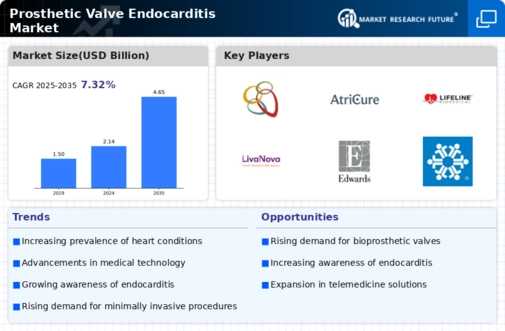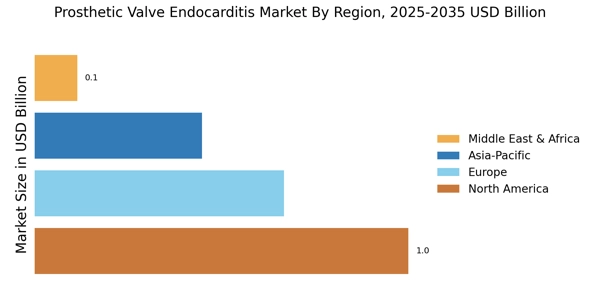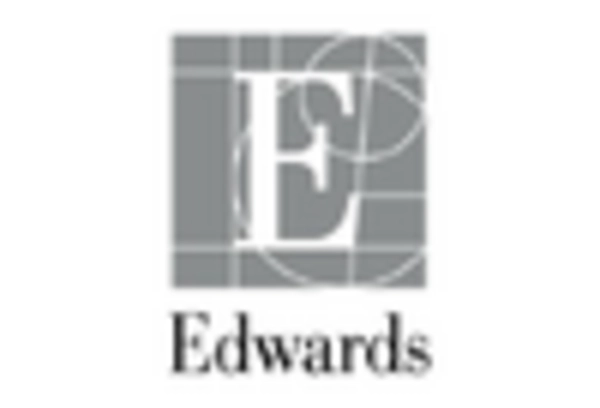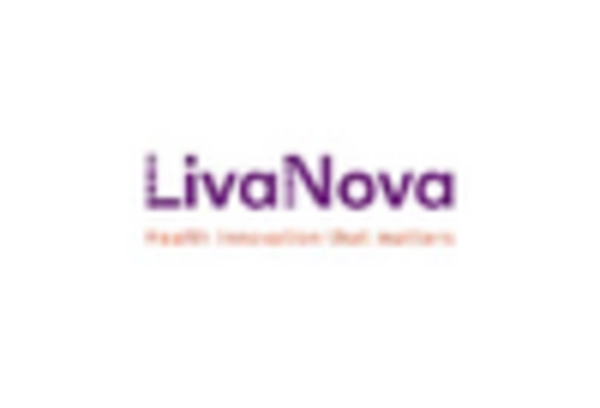Increased Healthcare Expenditure
Rising healthcare expenditure across various regions is a crucial driver for the Prosthetic Valve Endocarditis Market. Governments and private sectors are allocating more resources to healthcare, particularly in cardiovascular treatments. This trend is evident in many countries, where healthcare spending has seen a steady increase, with some regions reporting growth rates of over 5% annually. Such financial commitment enables healthcare facilities to invest in advanced prosthetic valve technologies and improve patient care. As healthcare systems enhance their capabilities, the likelihood of addressing prosthetic valve endocarditis effectively increases, thereby fostering market growth.
Growing Awareness of Endocarditis Risks
The growing awareness of the risks associated with prosthetic valve endocarditis is driving the Prosthetic Valve Endocarditis Market. Educational initiatives by healthcare organizations and advocacy groups are informing both patients and healthcare providers about the importance of preventive measures. This heightened awareness leads to increased screening and monitoring of patients with prosthetic valves, which can potentially reduce the incidence of endocarditis. Furthermore, as patients become more informed about their health, they are more likely to seek timely medical intervention, thereby increasing the demand for prosthetic valves and related treatments.
Rising Incidence of Heart Valve Diseases
The increasing prevalence of heart valve diseases is a primary driver for the Prosthetic Valve Endocarditis Market. As populations age, the incidence of conditions such as aortic stenosis and mitral regurgitation rises, leading to a higher demand for prosthetic valves. According to recent data, heart valve diseases affect millions worldwide, with estimates suggesting that nearly 5 million individuals are diagnosed annually. This growing patient population necessitates the use of prosthetic valves, which in turn elevates the risk of prosthetic valve endocarditis. Consequently, healthcare providers are compelled to invest in advanced prosthetic solutions, thereby propelling the market forward.
Technological Innovations in Prosthetic Valves
Technological advancements in the design and materials of prosthetic valves are significantly influencing the Prosthetic Valve Endocarditis Market. Innovations such as biocompatible materials and minimally invasive surgical techniques enhance the safety and efficacy of valve replacements. For instance, the introduction of transcatheter aortic valve replacement (TAVR) has revolutionized treatment options for patients with severe aortic stenosis. These advancements not only improve patient outcomes but also reduce the incidence of complications, including endocarditis. As a result, the market is witnessing a surge in demand for these innovative prosthetic solutions, which are expected to continue evolving in the coming years.
Expansion of Healthcare Infrastructure in Developing Regions
The expansion of healthcare infrastructure in developing regions is a significant driver for the Prosthetic Valve Endocarditis Market. As countries invest in improving their healthcare systems, access to advanced medical technologies, including prosthetic valves, becomes more widespread. This expansion is particularly notable in regions where cardiovascular diseases are on the rise, leading to an increased need for effective treatment options. Reports indicate that healthcare infrastructure investments in these areas are projected to grow by over 10% in the next few years. Consequently, as access to quality healthcare improves, the incidence of prosthetic valve endocarditis may also rise, further stimulating market demand.


















Leave a Comment